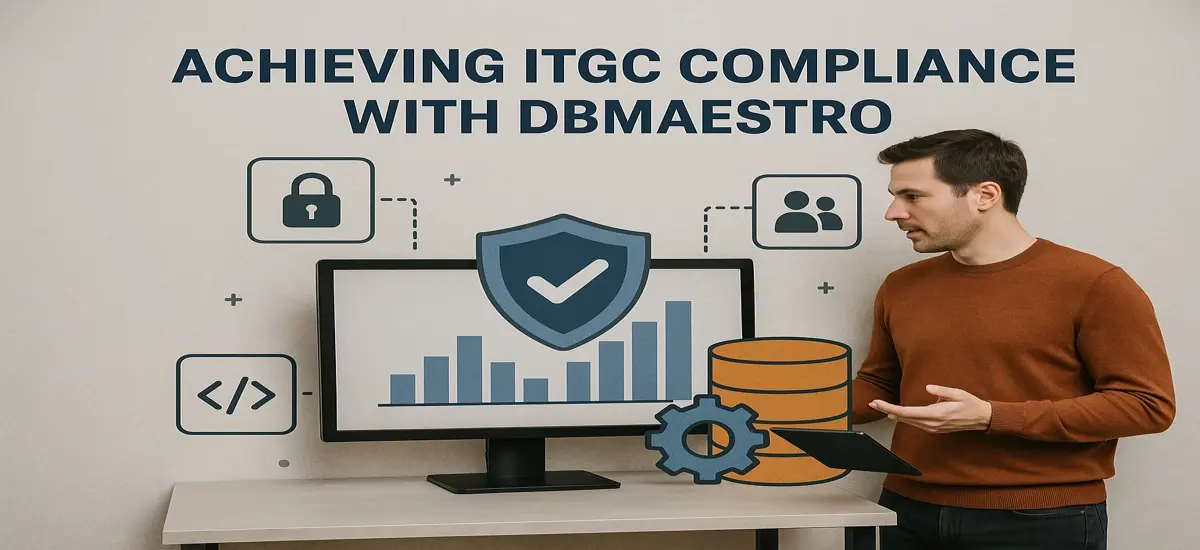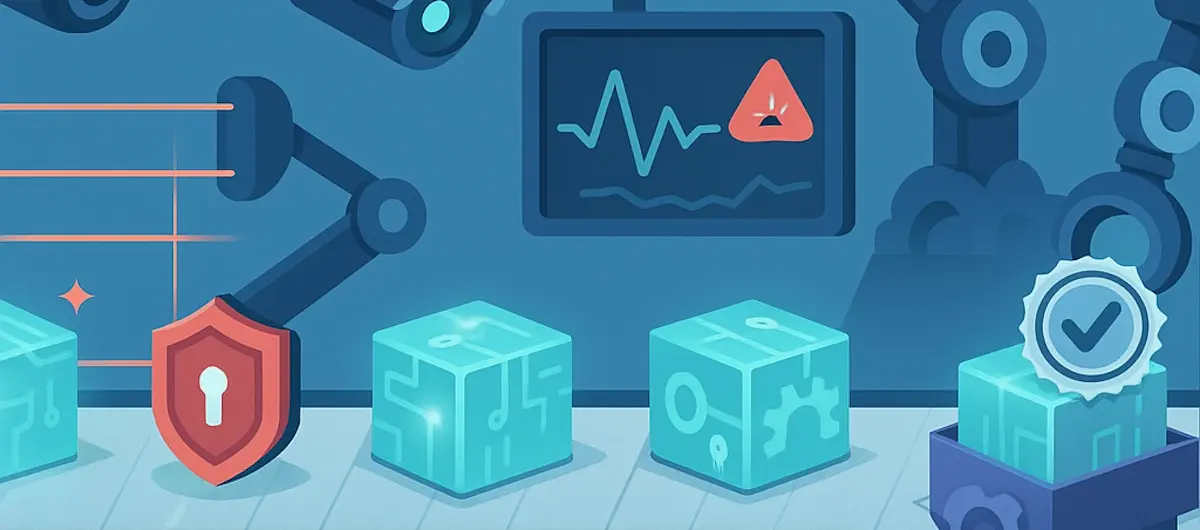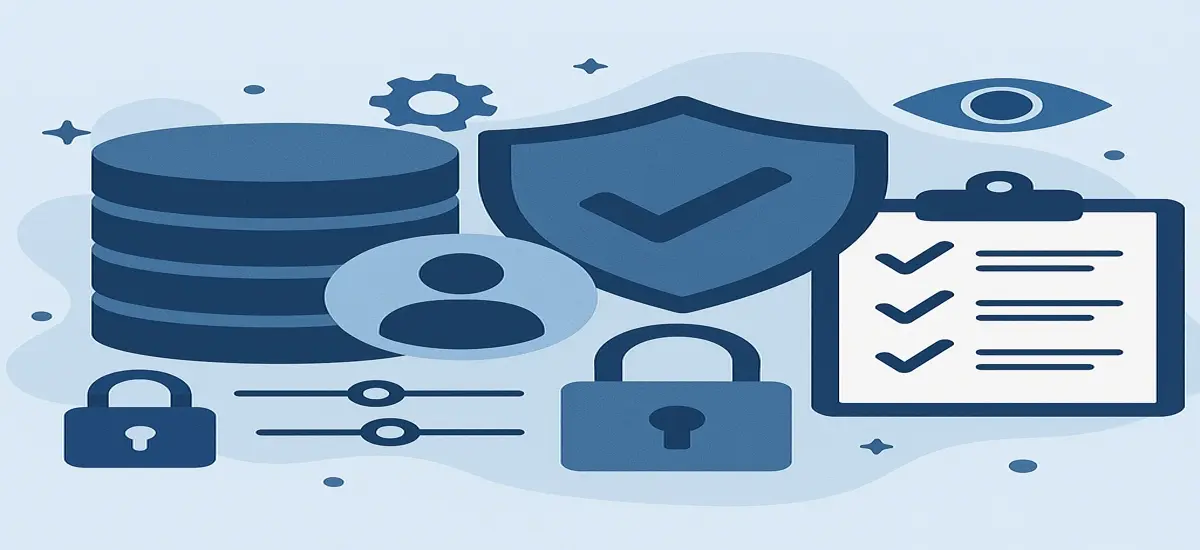Understanding ITGC: The Foundation of IT Assurance
Information Technology General Controls (ITGC) are the backbone of any organization’s IT compliance strategy. They are a critical component in ensuring that IT systems operate reliably, securely, and in alignment with regulatory requirements. Auditors rely on ITGC to evaluate the integrity of an organization’s technology environment, particularly when assessing financial reporting, data confidentiality, and operational resilience.
ITGC serve as broad, organization-wide policies and procedures governing:
- Access to Programs and Data – Ensuring only authorized individuals have appropriate access.
- Change Management – Governing how changes to systems are requested, reviewed, approved, and implemented using automation and CI/CD.
- Program Development and Implementation – Ensuring systems are developed in a controlled, documented, and secure manner.
- Computer Operations – Including backup, recovery, job scheduling, and monitoring to maintain service continuity and reliability.
While these controls apply across the IT stack, one area consistently under-addressed is the database layer, which serves as the source of truth for business-critical operations. Unfortunately, traditional CI/CD pipelines often leave the database outside the loop—resulting in compliance gaps, operational risks, and audit findings.
This is where DBmaestro steps in.
The Role of the Database in ITGC
Databases are the heartbeat of enterprise systems. They store financial data, customer records, compliance logs, and operational intelligence. Despite their criticality, database changes are often managed manually or semi-manually—via scripts passed through email, shared folders, or loosely governed version control systems.
This inconsistency introduces serious ITGC concerns:
- Lack of traceability: Who changed what, when, and why?
- No approval workflows: Were changes reviewed and authorized?
- No rollback mechanisms: What happens when a deployment fails?
- No separation of duties: Can developers deploy directly to production?
To remain ITGC-compliant, organizations must bring the database under the same rigorous governance that already exists for application code. That’s not just best practice—it’s increasingly mandated by auditors and regulatory bodies.

Where CI/CD Meets ITGC – And the Database Gap
Modern DevOps pipelines are built around automation and agility. CI/CD frameworks such as Jenkins, Azure DevOps, and GitLab allow teams to rapidly deliver features and fixes. But while application code changes are automatically built, tested, and deployed with version control and approvals baked in, database changes remain a blind spot.
This creates a paradox: DevOps accelerates innovation, but unmanaged database changes can sabotage ITGC compliance.
Here’s how the core ITGC areas intersect with CI/CD and where the database fits in:
- Access Controls
CI/CD platforms manage who can push code and trigger pipelines. Similarly, database changes must be subject to access control mechanisms—ensuring least-privilege principles and auditable user actions.
- Change Management
CI/CD pipelines excel at managing application changes. But without similar automation for database changes, organizations fall short of ITGC expectations. Every database update must be versioned, tested, reviewed, and approved within an automated, traceable process.
- Development and Implementation
Changes in production must flow through a documented, secured SDLC process. For applications, this is often done via Git workflows. For databases, if changes are still done manually, the integrity of the SDLC is compromised.
- Operations and Monitoring
CI/CD provides visibility into build and deployment logs. But for true ITGC compliance, monitoring must extend to database deployments: failure rates, rollback actions, policy violations, and more.
DBmaestro: Enabling ITGC Compliance from the Ground Up
DBmaestro is a purpose-built database DevSecOps platform that automates, governs, and secures database change management processes—making them compliant with ITGC requirements. Its unique capabilities bridge the gap between CI/CD and regulatory-grade database governance.
Let’s examine how DBmaestro addresses each ITGC domain.
🔐 1. Access Controls
Challenge: Ensuring that only authorized personnel can initiate and approve database changes.
DBmaestro’s Solution:
- Role-Based Access Control (RBAC): Assign granular roles to users—developers, DBAs, release managers—with clearly defined privileges.
- Environment-Based Segmentation: Prevent developers from deploying directly to production; enforce change requests to flow through proper channels.
- Audit Trails: Every user action is logged, providing auditors with a complete, tamper-proof history.
ITGC Benefit: Strong, auditable access control mechanisms aligned with least-privilege principles.
🔁 2. Change Management
Challenge: Making sure every database change is versioned, tested, reviewed, and approved.
DBmaestro’s Solution:
- Database Version Control: Changes are managed in Git, just like application code.
- Automated Deployments: CI/CD integration allows DBmaestro to apply changes automatically across environments, using approved scripts only.
- Change Approval Workflows: Integrate with Jira, ServiceNow, and other ITSM tools to ensure that no unapproved change reaches production.
- Drift Detection: Detect and resolve configuration drift between environments to ensure consistency.
ITGC Benefit: Full change lifecycle management with approvals, auditability, and consistency—meeting audit and compliance expectations.

🚧 3. Program Development and Implementation
Challenge: Making sure database changes follow a secure, structured SDLC.
DBmaestro’s Solution:
- Dev-Test-Prod Pipelines: Enforce structured deployments across environments, with validations and rollback capabilities.
- Dry-Run (Pre-Deployment Impact Analysis): Pretest deployment to detect broken dependencies, conflicts, and potential errors before changes are applied.
- Policy Enforcement Engine: Block deployments that violate corporate policies—e.g., dropping tables in production.
ITGC Benefit: Changes follow a repeatable, governed path from development to production, with validations at every stage.
⚙️ 4. Computer Operations
Challenge: Ensuring operational resilience, visibility, and rollback capabilities.
DBmaestro’s Solution:
- Deployment Automation: Scheduled, consistent deployments across hybrid environments—on-prem and cloud.
- Rollback Mechanism: Built-in restore points to quickly reverse changes if needed.
- Observability Dashboards: Real-time dashboards and scorecards covering DORA metrics (deployment frequency, failure rate, MTTR, etc.).
- Alerting and Notifications: Get notified on failed deployments, policy violations, or unauthorized access.
ITGC Benefit: Transparent, resilient operations that support business continuity and fast recovery—key pillars of ITGC.
Built for the Hybrid World
Modern enterprises operate in hybrid environments—some databases in the cloud (e.g., AWS RDS, Azure SQL), others on-prem (e.g., Oracle, SQL Server). DBmaestro is architected to work across these environments with a unified control plane.
- Unified Policy Management: Define and enforce governance policies across all environments.
- Cross-Platform Support: Oracle, SQL Server, PostgreSQL, MySQL, and more.
- Seamless CI/CD Integrations: GitHub Actions, Azure DevOps, Jenkins, GitLab CI, etc.
- Secrets Management Integration: Works with Vault and other tools to manage secure access in line with ITGC expectations.
A Strategic Advantage for Audit Readiness
Auditors increasingly focus on database governance when evaluating ITGC. DBmaestro not only ensures compliance—but also reduces the time, cost, and stress of audits:
- Automated Reports: Export change logs, audit trails, and access history instantly.
- Policy Violations Dashboard: Highlight and explain non-compliant activities.
- DORA Metrics: Provide performance metrics aligned with DevOps and audit best practices.
Turning Compliance from Bottleneck to Business Enabler
As IT executives face mounting regulatory pressure—SOX, GDPR, HIPAA, PCI DSS—the database can no longer be an unmanaged zone. ITGC compliance is no longer just about policies – it’s about automated, enforceable practices across every layer of IT, including the most critical: the database.
DBmaestro provides the automation, visibility, and governance required to bring the database into your compliant CI/CD framework. It eliminates human error, ensures full traceability, and creates a proactive defence against audit risks and data breaches.
By choosing DBmaestro, you not only comply with ITGC—you build a stronger, faster, more secure DevOps process that’s ready for the hybrid future.





